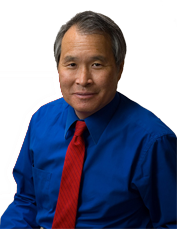Coronavirus Has a Valuable Retirement Lesson
On Wednesday March 18, 2020 the Dow-Jones stock market index had a steep drop briefly pushed the 30-stock index below the level where it closed on Jan. 19, 2017, the day before President Trump took office.
Due to the coronavirus shut-down of the US economy, the historic stock market meltdown has wiped out years of gains in a matter of weeks. After hitting a low of 18,591.93 at the 3/23/2020 close, there has been a substantial rebound but many have lost 20-35% or more of their retirement savings. The data on March 26, 2020 showed that a record 3.28 million Americans filed for unemployment benefits during the last week, compared to 281,000 the previous week. Here are the retirement planning lessons that might be learned by this unforeseen health and financial crisis:
Your emergency savings should be at least 12-18 months’ living expenses held in the bank or somewhere safe. This exceeds the normal 6 months goal espoused by financial planners. In contrast, many surveys over the last 3 years found that 30-40% of Americans don’t have $1,000 of emergency savings.
If you are within 10 years of retirement or already retired, you can’t have most of your life savings in the stock market. Since the beginning of this century on January 1, 2000, there has been the 2000-2002 Dot-Com Crash and the 2008-2009 Financial Meltdown, where the stock market dropped by about 50%. The Coronavirus panic occurred and within 5 weeks people could have lost 35% or more of their life savings.
You are safer with at least 2 streams of income besides your primary job. It could be a side business where you net $20,000/year and a private pension fund that generates the same. If you have $40,000/year of steady income outside of your job, most can survive for the year.
Your primary goal should be maximizing the amount of steady (safe and predictable) cash flow that you get in retirement. As the previous March 11, 2020 article covered “There are some steps to protecting your retirement”, one can maximize one’s Social Security Benefits; receive an 8-10% rate of cash flow from private pensions; or earn 7-9% from real estate lending or equipment leasing. Your amount of safe retirement cash flow is often more important than your rate of return on traditional Wall Street investments.
Example: A nurse deposited $250,000 in a private pension fund at age 62 and will receive $25,000 of annual income when she turns age 70. In comparison, with the average 2% dividends from S&P 500 stocks over the last 20 years, she’d have to save $1,250,000 to get the same $25,000 of income. Yet, in a financial panic major companies often cut their dividends to save cash. She would have had to save an extra $1 million ($1,250,000 vs. $250,000) in order to get the same $25,000 income. How many people can save an extra $1 million?
What has to change to achieve the above four steps? One has to substantially increase one’s savings and safe retirement cash flow. The average U.S. savings rate is about 8% of after-tax income versus 37% in China. Suppose your family household income was $75,000. If you add a side business that nets $15,000, which allows you to save $5,000 of tax; and you save $10,000 from your $75,000 of income, that’s a total $30,000 of annual savings. If you can earn an average 7%, in 20 years you’ll have an extra $1,315,955 if it’s in a tax-deferred retirement account. For most in low-cost AZ, that’s financial freedom.
Free Emergency Consultation for Readers: Normally I have a monthly seminar, but due to Coronavirus crowd restrictions, it’s not possible now. However, I will be happy to offer a free phone consultation for any reader. Please contact me at (480) 706-0177 or
Dr. Harold Wong earned his Ph.D. in Economics at the University of California/ Berkeley and has appeared on over 400 TV/radio programs.
For more information on how Dr. Wong’s methods that are indeed different from most other financial advisors, though DO WORK when it comes to saving taxes while creating wealth for your retirement, CLICK HERE to set up a phone appointment with Dr. Wong. There’s no obligation or strong-arm sales, we promise!

